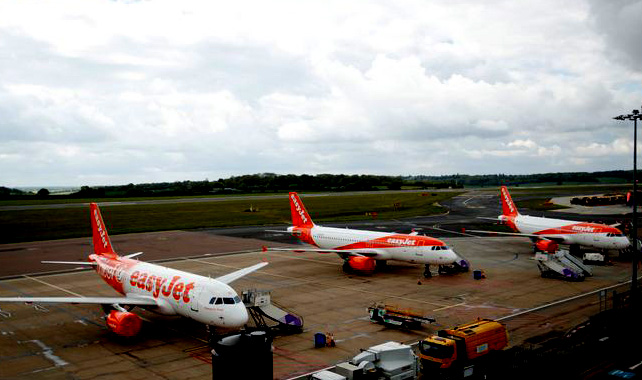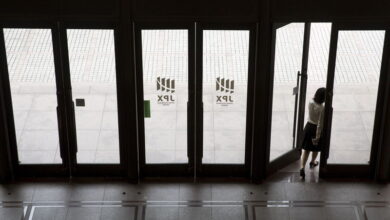The runway meltdown at Luton Airport shows that airports are vulnerable to climate change.

(Reuters) – Experts say that the small section of asphalt that lifted at London’s Luton Airport on Monday because of high temperatures shows how hard it is for airports to make their infrastructure resistant to climate change.
Here is a look at how airports around the world are dealing with the extreme heat and what might need to be done if there is another heatwave.
What happened and why at Luton?
On Monday, the Luton runway was closed for almost two hours because it was too hot. As a result, airlines had to delay or reroute flights because the temperature was above 37C (98.6F). This caused more problems for the industry during Europe’s already chaotic summer travel season.
A small patch repair that had been there for a long time on 0.2 percent of the runway’s surface area got so hot that it came loose and started to lift, an airport spokesperson said Friday. The problem was fixed within two hours.
The spokesperson said that it was built to the same standards as others in Britain and that it met all safety standards and rules for the industry.
“We are still looking at all of our maintenance and long-term safety options for all of our infrastructure.”
The spokesperson did not answer questions about when the runway would be repaved, what kind of asphalt would be used, or if there might be any changes to the material.
Most runways get a new surface about every 10 to 15 years.
Experts say that the airport, which is one of Britain’s busiest and is used by budget airlines like Ryanair and EasyJet, may be more vulnerable to heat than Heathrow, Gatwick, and Stansted because it is higher up.
Luton’s report on adapting to climate change, which came out in November 2021, said that one of the biggest risks was that high temperatures could damage infrastructure or slow down operations.
The airport said that in the middle term, it would have to make sure that all projects to resurface airfields took into account the effects of rising temperatures.
How do other airports handle very hot weather?
The materials used for the surface depend on the weather and other conditions in the area, as well as cost and other things.
Greg White, director of the Airport Pavement Research Program at Australia’s University of the Sunshine Coast, said this week that airports in the Middle East are more likely to use more expensive concrete runways because they can stand up to extreme heat.
He said that cheaper asphalt runways are more common in Britain and Australia, though they use different stiffness levels based on the weather in those places.
That means that asphalt runways do not melt like they did at Luton, Australia, where summer temperatures of 40 degrees Celsius (104 degrees Fahrenheit) are not unusual.
White said, “This would only happen in Australia if it got to 50 degrees.” “You need something different from what people usually do. But the same thing can also happen at the other end. Failures will be different, but it can happen in very cold weather if you have something that was made for much warmer weather. “
White said that Luton could make its runway less sensitive to high temperatures, but that would make it more sensitive to very low temperatures.
What else do airports have to deal with?
The Airports Council International (ACI), a group that represents airports around the world, said it will soon publish a handbook for its members about airfield maintenance. One section will be about managing pavement.
“This has a list of likely causes of pavement distress, and some of them have to do with weather,” an ACI representative said.
Airports may have to deal with more problems as temperatures rise. Runway patches are just one of them. When it’s hotter, planes may need more room to take off or have weight limits.
Because hot air is thinner, planes need more fuel and more time to take off when it gets warmer.
In November 2021, the Federal Aviation Administration released a study that said runways at eight or nine of the 30 busiest U.S. airports may need to be lengthened by at least 500 feet (152 metres) because of rising temperatures and more rain, which require more space for planes to stop.
Rising sea levels and stronger storms are causing many airports to invest in things like higher runways, seawalls, and better drainage systems to protect their fixed assets in the future.





